Hello there my fellow walking fans and thanks for joining me as I take my next journey around London. My adventure today sees me explore Richmond’s most popular and picturesque sights. I’ll begin my walk at Richmond Green and take a stroll down to the riverside where I’ll pass by not one, but four bridges – Richmond Railway Bridge, Twickenham Bridge, Richmond Lock and Footbridge and Richmond Bridge. I’ll then take a walk up Richmond Hill to discover one of the finest views you’ll see and from there uncover Richmond Park’s amazing landscapes, including the superb Isabella Plantation. My walk will then end in woodlands of Wimbledon Common.
I have to say this walk was one of my favourites to do and was always on my list, so I hope you enjoy it as much as I did doing it!

My walk starts at Richmond Green, which is owned by the Crown Estate and leased to the London Borough of Richmond upon Thames. The Green is roughly 12 acres (4 hectares) and is overlooked by a mixture of period townhouses, historic buildings and commercial establishments, including the Richmond Lending Library.


In the Middle Ages Richmond Green was used for jousting tournaments when English monarchs were living in or visiting the area. There have been houses and commercial premises around the Green for over 400 years, which were built for people visiting Richmond Palace. Charles I brought his court to the area in 1625 to escape the plague of London and by the 18th Century these would become the homes of minor nobility, diplomats and court hangers-on.
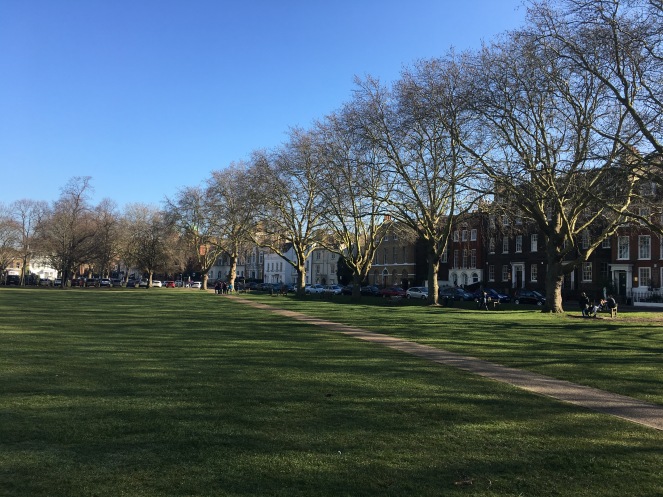

The mid-19th Century saw the Green being cut off from the Old Deer Park as a result of the construction of the railway and this was further exacerbated by the A316 road being built in the early 20th Century.
Whenever you think of a village green, I envision a view like Richmond Green, with all its surrounding houses and spacious areas. It’s such a cute and lovely little gem of Richmond, and does perfectly illustrate all that’s wonderful about green spaces in the town.

One of the Green’s most familiar features is its association with cricket with matches being played on it since the 17th Century. The earliest reference to cricket on Richmond Green is from a 1666 letter by Sir Robert Paston, a Richmond resident. The earliest known fixture on the Green was Surrey vs. Middlesex in June 1730 – a match won by Surrey. The first reference of a team playing on the Green was in July 1743 – while today it’s the home to two village teams playing there. One cricketing feature of the Green is the beautiful pub called The Cricketers. I’d love to one day play on the Green as it’s got that real village cricket feel about it!

I’ll now leave Richmond Green and head towards the picturesque Richmond waterfront where I’ll find not one, but four bridges! Down by the river is really like something from a postcard and would make a wonderful watercolour painting!
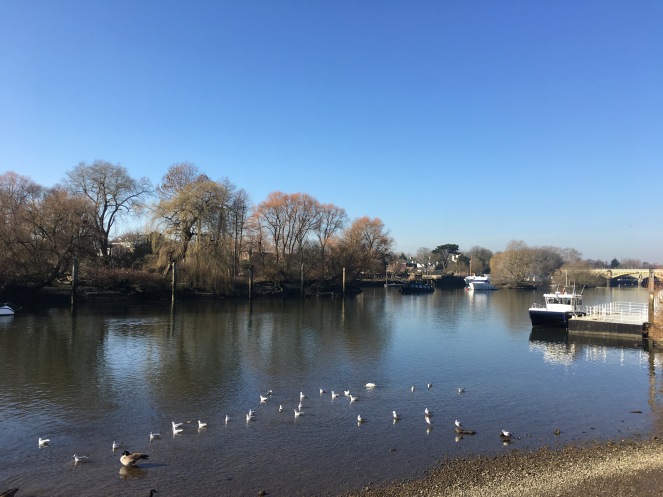



As you head away from the waterfront and Richmond Bridge, you come to the first of three bridges in a row, Richmond Railway Bridge. After the railway came to Richmond in 1846, the line was extended to Windsor, which meant a bridge was required to pass over the Thames. The original bridge was designed by Joseph Locke and J.E. Errington, opening in 1848. The bridge’s design and structure were similar to Barnes Bridge, which also used three 100 foot cast iron girders supported on a stone-faced land arches with two stone-faced river piers.
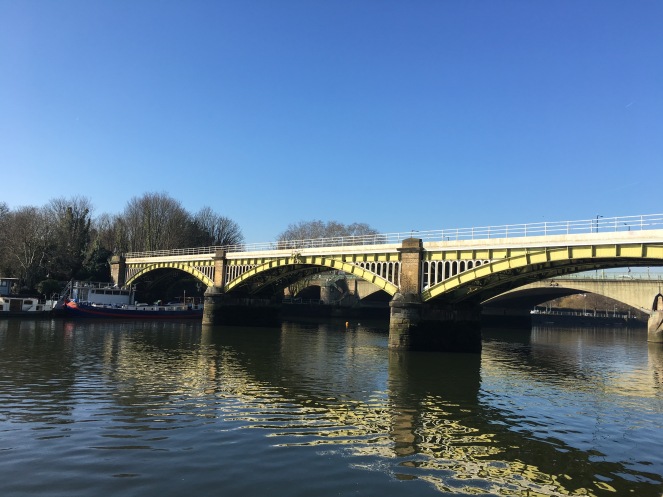
The bridge was rebuilt in 1908 after concerns were raised about its structural integrity. Further developments occurred in 1984 with its main bridge girders and decking being replaced. In 2008 the bridge was declared a Grade II listed structure to preserve it.
The most striking aspect of the bridge for me is its colour, such a bright and radiant yellow really adds elegance to it. I’m a huge fan of its structure and character, does have a real waterway feel about it.


Right next to Richmond Railway Bridge is Twickenham Bridge, which opened in 1933 and carries both cars and pedestrians across it. The bridge was constructed for the new Chertsey Arterial Road, which connects the Old Deer Park on the south bank of the river and St. Margarets on the north bank. The name of the bridge derives from the fact it’s on the road to the town Twickenham, which is approximately 3km upstream from the bridge.
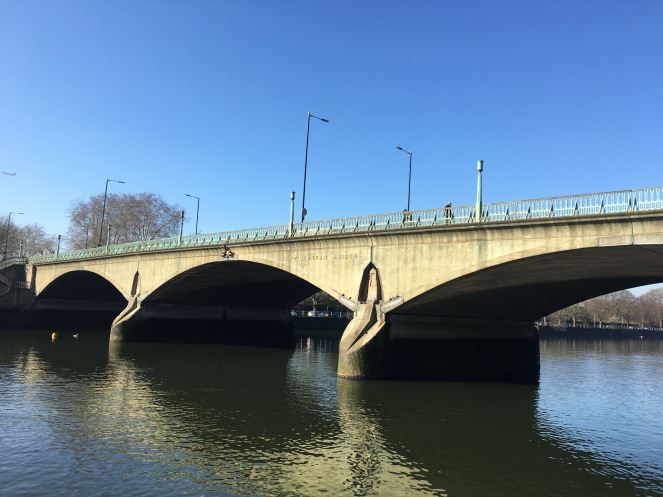
The bridge’s architect was Maxwell Ayrton, with Alfred Dryland being the head engineer. The bridge incorporates three permanent hinges enabling the structure to adjust to changes in temperature, and was the first reinforced concrete bridge structure in the UK to use such an innovation. The arch springings, as well as the arch crowns, have decorative bronze cover plates. One notable and historic element of the bridge is that in 1992 the first Gatso speed camera in the UK was placed there. Like Richmond Railway Bridge, it was declared a Grade II listed structure in 2008.
Once again the colour of the bridge glistening in the sunshine and reflecting in the water adds to its beauty. There really aren’t too many more lovely sights than a bridge over a river, and luckily London provides so many of these views.


The final bridge in the trio is the unique Richmond Lock and Footbridge, which opened in 1894. The bridge is a lock, rising and falling low-tide barrage integrating controlled sluices and paired with pedestrian bridges. The Grade II listed structure is the furthest downstream of the 45 Thames locks and the one and only operated by the Port of London Authority.
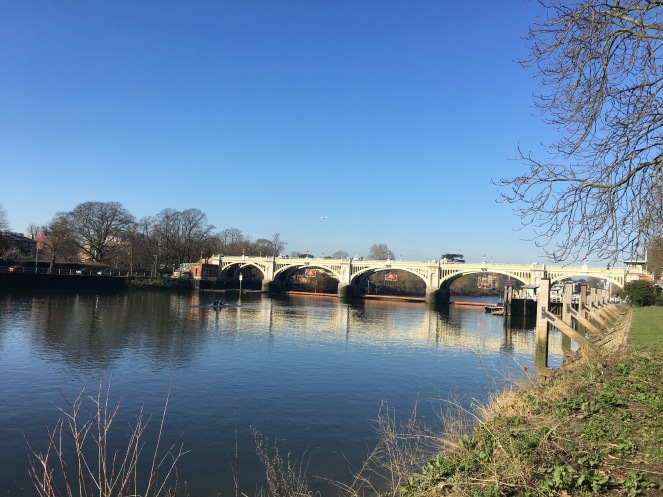
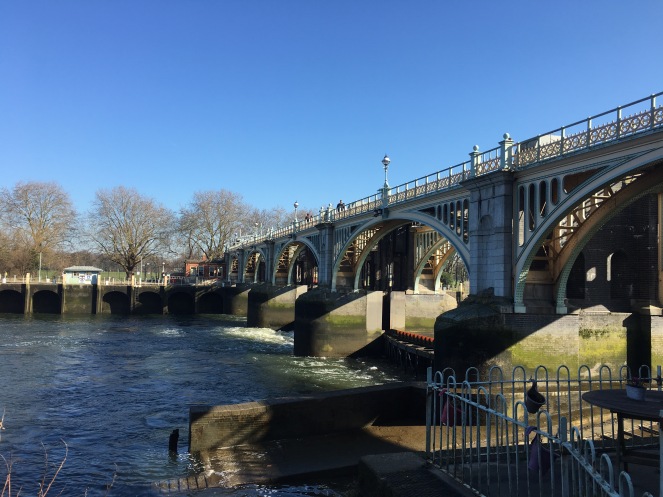
It connects the promenade at Richmond with the neighbouring district of St. Margarets on the west bank. At high tide the sluice gates are raised and partly hidden behind metal arches forming twin footbridges. The lock bridge was built to maintain the lowest-lying head of water of the 45 navigable reaches of the Thames above the rest of the Tideway. Below the structure for a few miles, at low tide, the navigable channel is narrow and restricts access for vessels with the greatest draft. The next major point of mooring below the lock is at Brentford Dock.
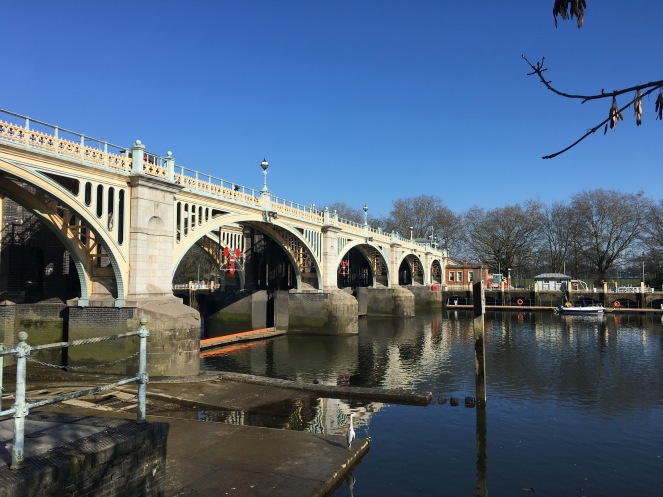
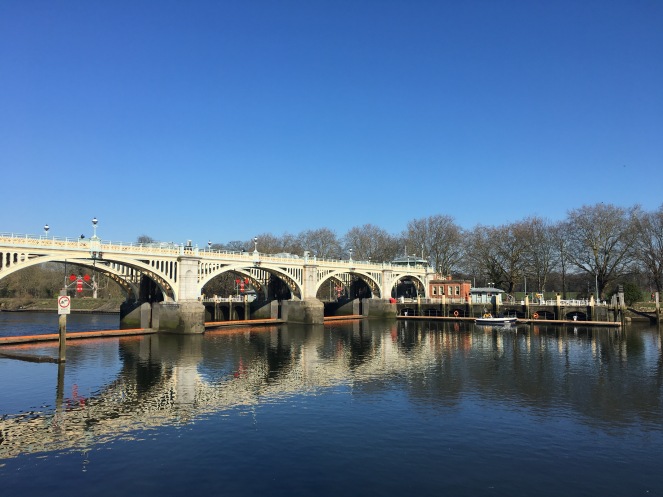

I’ve explored many of London’s bridges, but this one is so distinct, never have I explored one which has a lock within it. It’s such a quirky structure and so different to the other locks I’ve walked past on my routes. An architectural piece of brilliance, it has a grand and historical nature about it. The one thing also that struck me was how complex the bridge is, as it isn’t just a normal bridge, there’s so many technical aspects within it to function the lock. Also the view from it is something to behold across the Thames of the other bridges and it feels quite eerily as you’re quite high up, so you can only hear the breeze of the wind.




I’ll now take a stroll back to Richmond’s waterfront towards my next stop on today’s walk, Richmond Bridge.

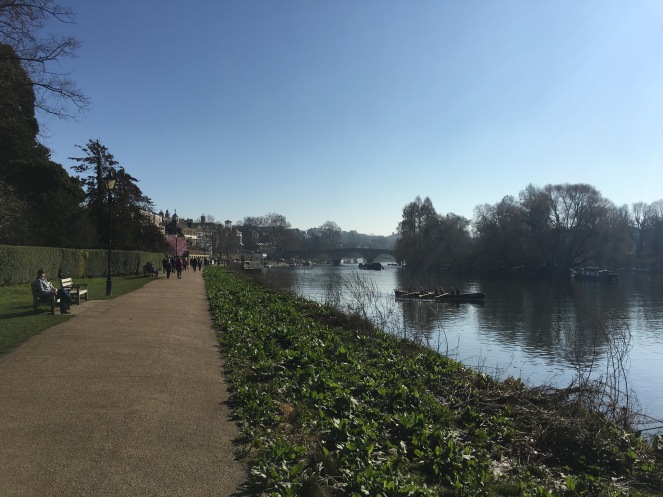

I just love the riverside area in Richmond, it has such a special feel about it as it’s not like other parts of London that are along the Thames. – it has the essence of a small village. Richmond is known for being an affluent place and the estate like buildings on the waterfront promenade do illustrate that wealthy reputation.



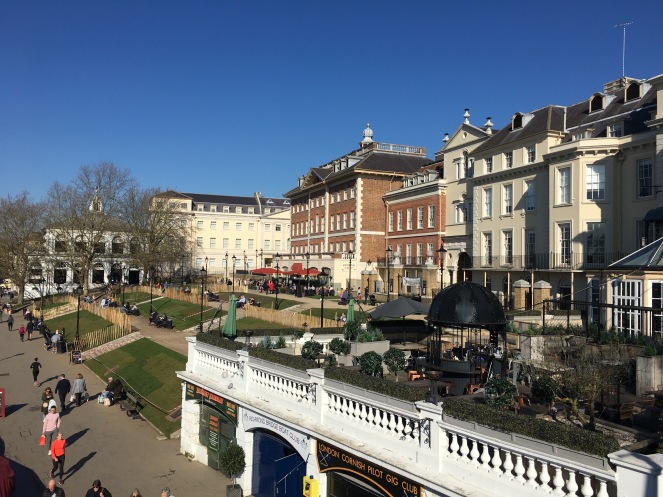
Beside the waterfront sits the pretty Richmond Bridge, which opened in 1777 as a replacement for a ferry crossing which connected Richmond town centre on the east bank with its neighbouring district of East Twickenham to the west. Designed by James Paine and Kenton Couse, the stone arch bridge had tolls charged on it until 1859. A grade I listed structure, the bridge was widened and slightly flattened between 1937 and 1940, but otherwise still conforms to its original design.


Today, it’s the oldest surviving Thames bridge in London and you can’t help but be taken in my its splendour. The historical significance of it really comes through in its stone structure and I have to say it’s one of my favourite bridges in London, which is a bold statement as there are so many wonderful structures to choose from! It’s the ideal vantage point to see across Richmond’s pretty waterfront.


I’ll now follow the river as it meanders its way through Richmond and take a detour to my next stop today, Richmond Hill.


I’ve taken in some amazing views of London, whether that’s from Parliament Hill or Stave Hill or Sydenham or Alexandra Palace, but the one from Richmond Hill is something so special. Unlike the other aforementioned viewpoints, you get a different perspective from the hill as you can’t see any of London’s iconic landmarks, more the pleasant sight of trees and the river, it feels like the countryside. The awe-inspiring view for me demonstrates why I love London so much, as you uncover something new and thrilling with every area you explore.

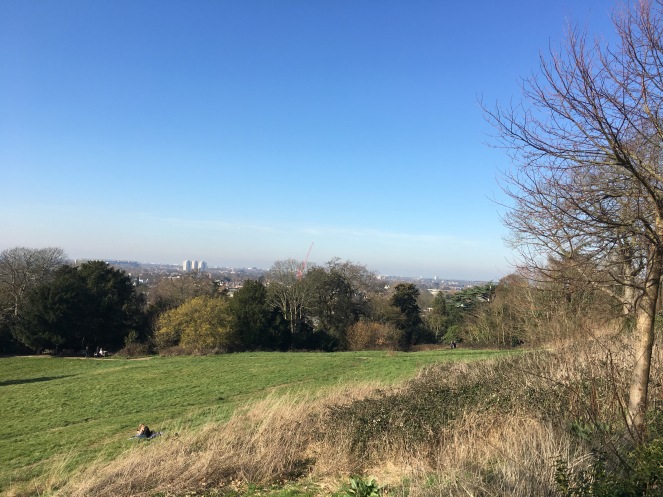



A walk down the path and taking a left at the bottom of the hill brings you to the vast Petersham Meadows.
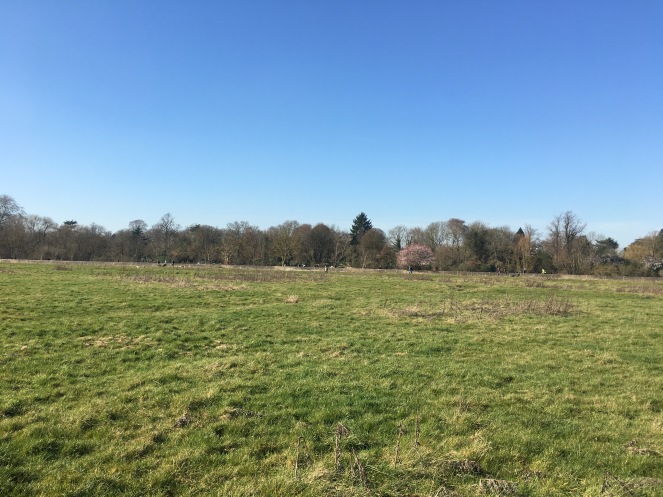



After you’ve walked through the meadows you come to the remarkable Richmond Park! The park was created by Charles I in the 17th Century as a deer park and is the largest of London’s Royal Parks. At 955 hectares (2,360 acres) it’s also the second largest park in London, after the 4,046 hectares (10,000 acres) Lee Valley Park and is Britain’s second largest urban walled park after Sutton Park in Birmingham. To put that into further perspective, Richmond Park is around three times the size of Central Park in New York!


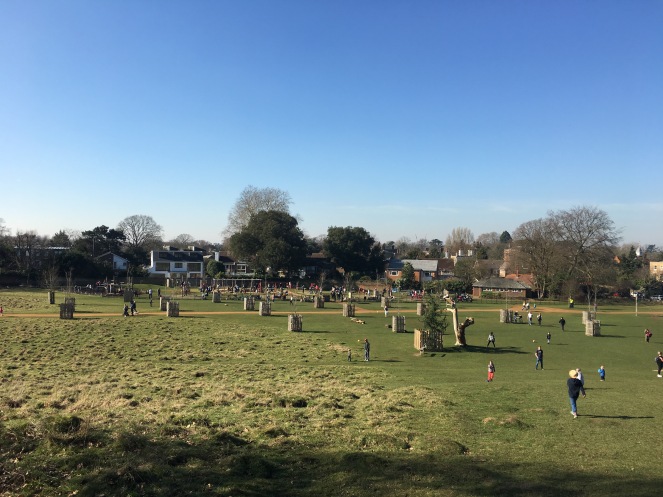

One of the most amazing parts of London, the park is a national nature reserve, a Site of Special Scientific Interest and a Special Area of Conservation with Grade I listing. An Historic England site, its landscapes have inspired many famous artists and been the setting for several films and TV programmes.


Richmond Park includes many buildings of architectural or historic interest. The Grade 1 listed White Lodge was formerly a royal residence and is now home to the Royal Ballet School. The park’s boundary walls and ten other buildings are listed as a Grade II listing, including Pembroke Lodge, the home of 19th Century British Prime Minister Lord John Russell and his grandson, the philosopher Bertrand Russell.
Historically the preserve of the monarch, the park is now open for all to use and includes a golf course and other facilities for sport and recreation. It played an important role in both world wars and in the 1948 and 2012 Olympics.




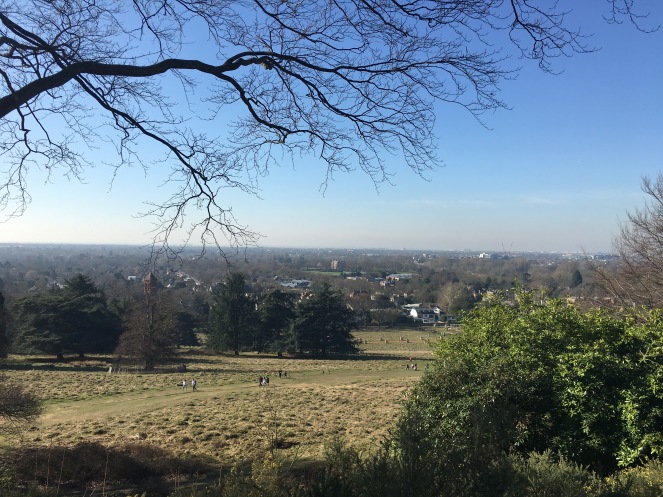
The great thing about Richmond Park is that it combines so many incredible elements – a wonderful view, picturesque gardens, spacious splendour and hidden gems. You can’t underestimate just how big it is and with every step you take you encounter more and more of its awesomeness and can truly get lost within all its beauty.








Now I was walking around Richmond Park and I thought, there’s one thing the park is known for which I’ve still not seen… deers! But luckily that changed as I came across the majestic sight of a herd of deer! They’re so tame and you can get so close to them without them getting scared. If you approach them slowly and quietly, you can get such a great photo, and this was the closest I’d ever gotten to them, and might ever get to see them. There aren’t too many places in London where you can get to meet such amazing creatures, and this has to be the first time I’ve come across an animal like it on my walks!




A distinct part of Richmond Park is its picturesque Isabella Plantation, which is a 16 hectare (40 acre) woodland garden planted in the 1830s. It first opened to the public in 1953 and is best known for its evergreen azaleas, which line its ponds and streams.
Located in the gardens are the National Collection of Wilson 50 Kurume Azaelas (introduced to the west from Japan in the 1920’s by the plant collector Ernest Wilson), large collections of Rhododendrons and Camellias, plus many other rare and unusual trees and shrubs.




I immediately fell in love with the gardens with all its cute streams, colourful plants and tranquility. You can tell there’s definitely a Japanese influence on it and it did remind me quite a bit of my walk around Kyoto Garden in Holland Park.




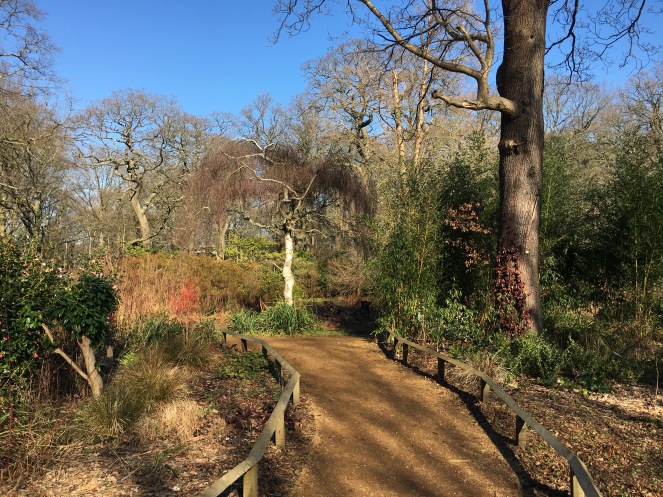
My final destination on this edition of the London Wlogger is Wimbledon Common, which is a short walk from Richmond Park. Now on my walks I’ve seen quite a lot of sights, but this had to be one of the weirdest things yet… a pedestrian crossing button… where there’s no road or crossing! Very odd indeed!
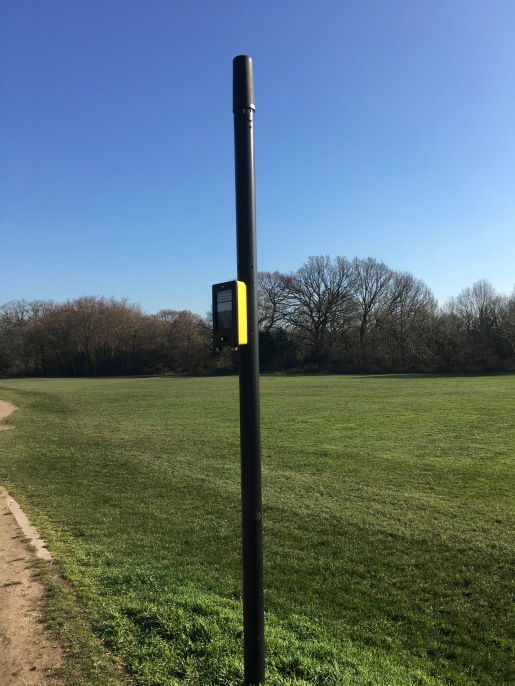
Wimbledon Common is a large open space made up of three areas – Wimbledon Common, Putney Heath and Putney Lower Common, which together are managed under the name Wimbledon and Putney Commons. The area is 460 hectares (1,140 acres) of protected woodland and common land, and is the largest expanse of heathland in the London area.


In 1864, the lord of the manor, Earl Spencer, who owned Wimbledon manor, attempted to pass a private parliamentary bill to enclose the Common for the creation of a new park with a house and gardens and to sell part for building. In a landmark decision for English common land, and following an enquiry, permission was refused and a board of conservators was established in 1871 to take ownership of the common and preserve it in its natural condition.



In the 19th Century the windmill in the common was the headquarters of the National Rifle Association and drew large crowds each July. These annual gatherings were attended by the élite of fashion. The Common is also home to The Wombles, a series of characters created by Elizabeth Beresford, who later got their own TV show and musical group!

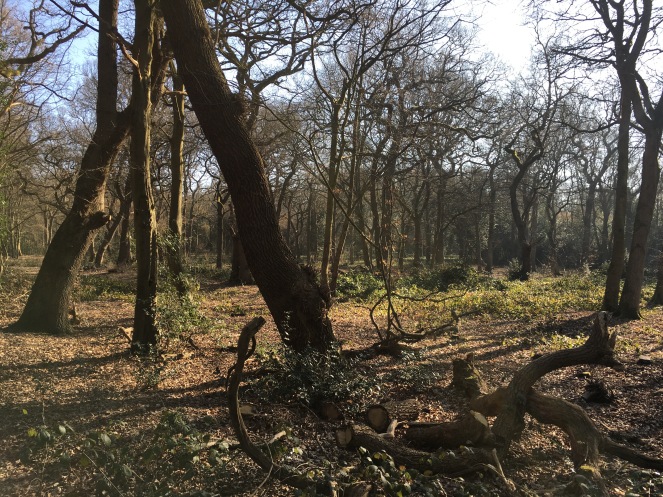
The Common once again offers the blend of breathtaking natural sights with many hidden treasures and pathways. I really loved the tall trees, which tower above you when you walk through them. It truly is the most wonderful of places to finish my walk!



Well it has been a splendid walk where I’ve explored the best that Richmond has to offer – with its bridges, views and park, and then finishing like many of my walks before have done, in marvellous woodland setting!
Thanks for joining me and in the meantime you can follow all my walks on Twitter and Instagram, and don’t forget to sign up to my blog too so you don’t miss a post! Also why not have a read of my other walks which explore all over London, from north to south, to west to east via central, there’s something there for you! 🙂 Here are the links to them all below for you!
King’s Cross to Hampstead Heath
Leadenhall Market to Old Spitalfields Market
St Paul’s Cathedral to Moorgate
Mile End Park to London Fields
Hyde Park Corner to Italian Gardens
Clapham Common to The Albert Bridge
Grosvenor Gardens to Knightsbridge
Holland Park to Meanwhile Gardens
Hackney Downs to Springfield Park
Ravenscourt Park to Wormwood Scrubs
Covent Garden to Southwark Bridge
Putney Bridge to Barnes Common
Westminster Abbey to Vauxhall Bridge
Crystal Palace Park to Dulwich Wood
Clapham Junction to Battersea Bridge
Norbury Park to Tooting Commons
Lesnes Abbey Woods to the Thames Barrier
Sources:
All photos taken by London Wlogger © Copyright 2019
Information about Richmond Green
Information about Richmond Railway Bridge
Information about Twickenham Bridge
Information about Richmond Lock and Footbridge
Information about Richmond Bridge
Information about Richmond Park

That was an amazing walk. Is there a purpose for those wooden fences which appear to be temporary or part of “the look”? I’m guessing they are rehabilitating those sections?
So much history to be discovered and since they are our roots, interesting.
LikeLiked by 1 person
Thank you so much, glad you enjoyed it! 😃 I think they’re to protect the grass, as they’re growing it in preparation for the summer, so no one steps on it 😊 London is full of historical gems, and you find out something new every time!
LikeLiked by 1 person
I lived in Richmond as a child and loved it dearly. Talking the walk with you brings back so many memories. Thank you 🙂
LikeLiked by 1 person
I’m glad I could evoke so many wonderful memories, and you were very lucky to grow up there as a child, such an amazing place!
LikeLiked by 1 person
This would be a lovely part of London to live in. So pretty.
LikeLiked by 1 person
I couldn’t agree more, such a beautiful village feel about it! I worked in Richmond for a year and loved exploring it on my lunchtime walks 😃
LikeLiked by 1 person
I am impressed with the size of so many of your commons and parks. Your photos, as always, are fantastic.
LikeLiked by 1 person
They’re so vast and glorious – perfect for exploring! Aww thank you so much 😊
LikeLiked by 1 person
Your photos are amazing, They have a way of making a person feel like they are standing there with you.
LikeLiked by 1 person
Thank you so much, it’s amazing what you can do with an iPhone 😃 And the real stars of the photos are the things in them 😊
LikeLiked by 1 person